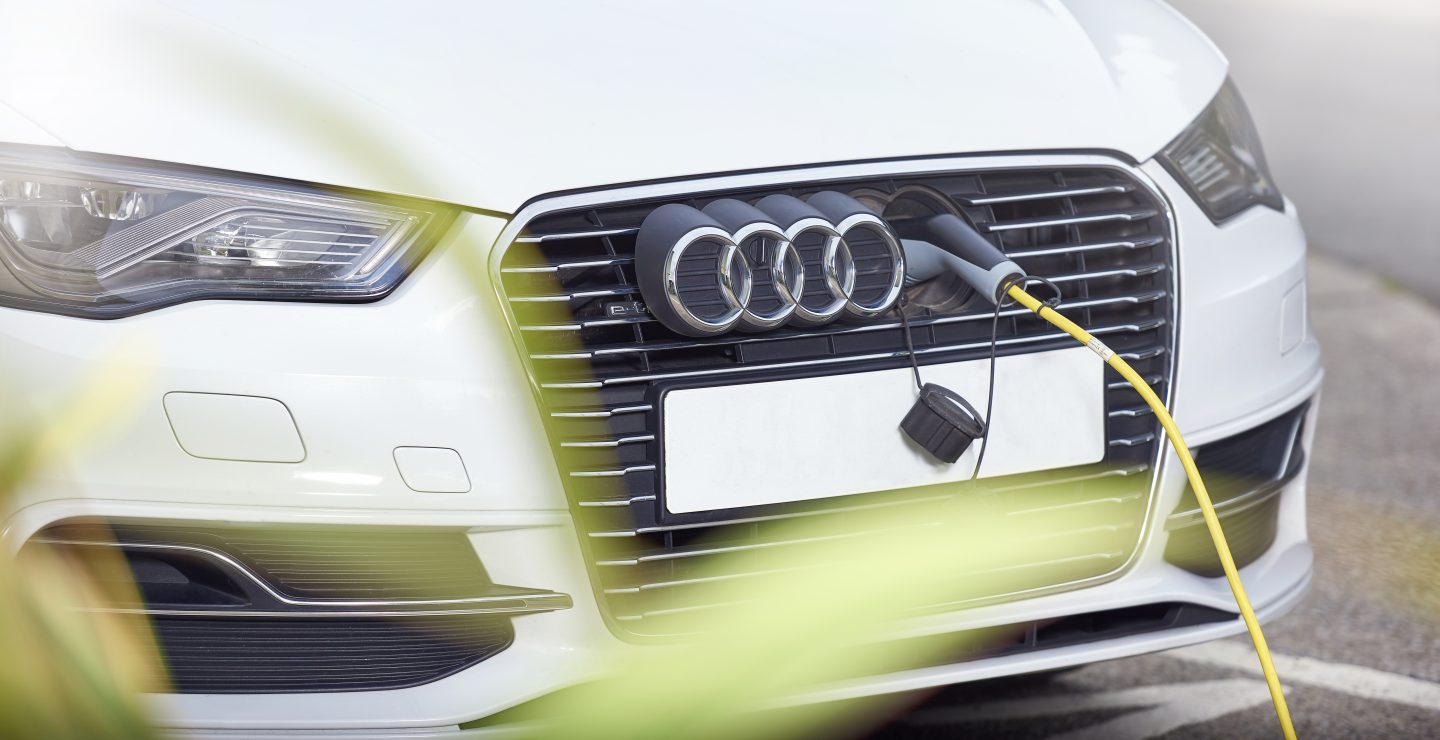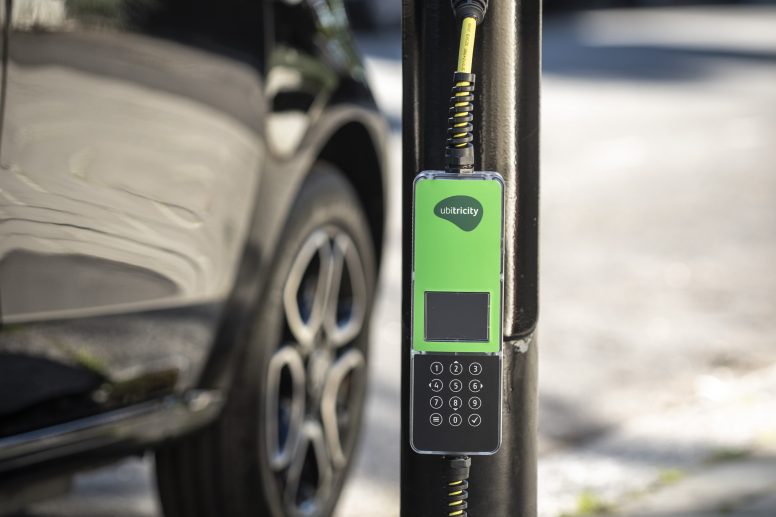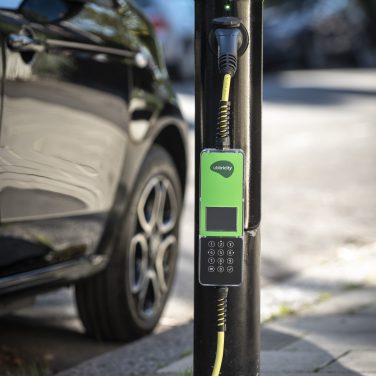Lucy Zodion outlines its five key things to consider when installing an on-street charge point
By David Hall, Head of Sales at Lucy Zodion
The government has the unenviable task of managing one of the world’s most significant, and important, transitions to occur in industry for a very long time. Perhaps the most important to happen in motoring, ever.
The government’s Road to Zero strategy aims to be net-zero by 2050 [1]. The sale of new conventional petrol and diesel cars will also be phased out by 2040 (and now brought forward to 2035) to support this ambitious goal.
The Department for Transport said its £400m public-private Charging Infrastructure Investment Fund will see thousands more charge points installed around the country. The UK currently has approximately 11,000 public charging locations providing 30,000 EV connectors [2]. Whilst that is quite impressive, it is still a cause for concern.
One factor that impacts on our industry enormously is the lack of charging infrastructure available. While charge point numbers are increasing, the UK is still some way short of what it needs, and this feeds into consumer EV ‘range anxiety’, in turn dampening demand.
Home and Workplace Charging
It is claimed 90% of people who charge their electric car do so at home. The government has set out ambitions for all new homes in the UK to be built with the provision of EV charge points, a world first [3]. But while charging at home is ideal for those who have access to a drive and a charge point, for those without, charging immediately becomes more challenging.
The BBC recently reported on this apparent gap in charging infrastructure, where it identifies real life cases of users struggling to charge thier new electric vehicle due to lack of off-road parking. Read the article here. The article states:
A recent report from Capital Economics suggested that fleshing out the UK’s charging network will cost £45.9bn between now and 2050. There are even fears that the electricity grid won’t be able to cope as thousands more EVs get plugged in by their new owners.
Nevertheless, as Lighting Journal highlighted in the autumn, on-street EV charging is gradually becoming more available, with a range of funding streams available for local authorities and others to tap into (‘Plug in and play?’, November/December 2019, vol 84, no 10). All this, in turn, puts street lighting and streetlamps firmly in the spotlight when it comes to EV charging.
Why street lighting? It is existing infrastructure, ubiquitous and common throughout most urban spaces. As streetlights are constantly powered, it makes sense to utilise existing street furniture, especially when adding further street clutter is not suitable or desired.
Retroftting EV charging facilities into streetlights can often be cheaper than installing new on-street charge points, which often include expensive ‘new connection’ costs. Saying that, existing streetlights have their own costs and complications, particularly around connections and earthing requirements. However, manufacturers such as ubitricity have made good headway in tackling this area.
As Allan Howard outlined in Lighting Journal in January (‘It’s not just a case of “here’s a vertical tube, let’s go and drill a hole in it”,’ vol 85 no 1), in order to make streetlights multi-purpose assets in this way, providing both illumination and charging facilities, the electrical infrastructure within the lighting column itself must be adapted, and done so by an approved electrician.
Although streetlights are already connected to a DNO electricity supply there are a number of considerations and requirements, particularly on earthing systems (conversion to a TT earthing system). The correct type of protection must be used and locality of nearby assets must be considered to reduce the potential of electric shock (touching distance).
At Lucy Zodion, we strongly recommend using the latest edition of the IET Code of Practice for Electrical Vehicle Charging Equipment Installation (BS7671+ A3) as your guide for installations. Work with your DNO and appoint an approved contractor to help ensure that your street lighting infrastructure is compatible and in line with industry standards.
In the event when a secondary isolator is not present, ensure you install a product such as (to use our own examples) a Trojan Midi (3-way) or Trojan Maxi (4-way), manufactured to current British and industry standards and tested to IEC/EN 60947-3 and the fuse carrier to IEC/ EN60269-1. This will provide a reliable protection. Use any service department to help manage variations, gland plates, locking options and so on, where possible, giving individual protection for both the EV charging equipment and the luminaire.
Public Realm Charging Points
One thing is certain, to implement a holistic EV charging infrastructure, a mix of charging types is required, not just slow (home) and fast (7kW on-street). Public realm charging points are becoming increasingly crucial as adoption rates for electric vehicles surge. People will need to charge their cars as they go about their daily lives. Whether at schools, shopping, train stations, or airports (and the list goes on), EV charging needs to be commonplace and readily accessible, not just when at work or home. The need for convenience is paramount.
These public realm chargers will need to have faster charging times – between four hours and 30 minutes – falling into the ‘rapid’ and ‘super charging’ category. With this, of course, comes a different set of requirements. These are associated with larger power capacity, the need for new connections, either from DNO supply or perhaps even a package sub station if a large installation.
And the requirements will vary in different areas of the country, as each DNO will have its own approved products and working practices. Luckily for us at Lucy Zodion our street lighting cut-outs are widely approved across all DNO networks. Additionally, our sister company Lucy Electric has been working with DNOs for decades, supplying heavy duty cut-outs, CTCOs and package sub stations.
Given all this, we recommend five things to consider when installing a new connection for an EV charge point.
1. Plan properly – Anticipate that the process will take longer than expected and, given the increasing demand for new connections, timescales will only get longer.
2. Follow the process – Check with your DNO when ordering a new connection that you are using the right process. Many have fallen foul by not checking first, resulting in an installation that will not get approved.
3. Install Quality Products –Installing high-quality products will reduce potential issues that may arise in the future. Ensure all your products comply to the appropriate regulations and are tested regularly.
4. Consider Oversizing – Consider oversizing your supply and include some spare capacity in your EV connection and supply pillar. By making your system scalable, you can add to the number of charge points or upgrade the rating of your charge points in the future, when technology supersedes current equipment.
5. Maintain Regularly – In order to keep your equipment in good working order test and inspect regularly. It is pointless having stranded assets that aren’t serving customers and/or earning revenues.
This article was originally published in the March 2020 edition of the Lighting Journal, available here.
Sources:
[1] ‘The Governments Road to Zero Strategy aims to slash vehicle emissions by at least 50 per cent’ https://www.gov.uk/government/publications/reducing-emissions-from-road-transport-road-to-zero-strategy [2] ‘Charging point statistics, 2020’, Zap Map website, February 2020 https://www.zap-map.com/statistics/ [3] ‘Electric car chargepoints to be installed in all future homes in world first’, July 2019, Department for Transport, Office for Low Emission Vehicles, https://www.gov.uk/government/news/electric-car-chargepoints-to-be-installed-in-all-future-homes-in-world-first



